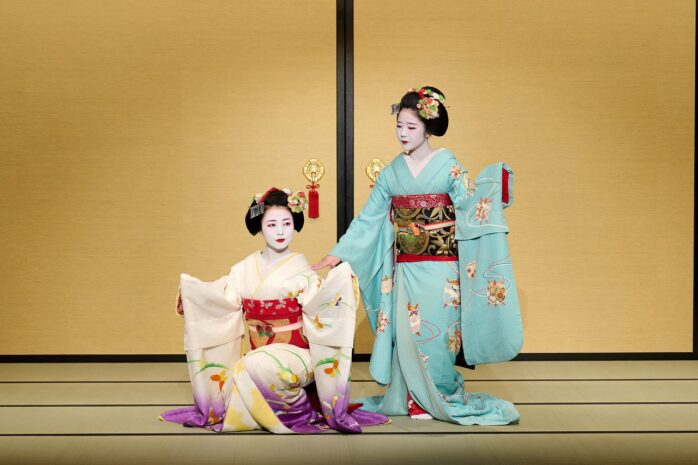
The Geisha culture is a fascinating and mysterious world hidden within Kyoto’s historic alleys. Geishas are revered for their elegance, grace, and refined arts, steeped in history and mystery. The phrase “Geisha” brings up pictures of ladies wearing decorative kimonos, having their faces painted white, and sporting beautiful hairstyles, but their job’s true nature goes beyond mere looks. These intriguing performers are essential to Kyoto’s nightlife, and to comprehend their world is to travel across the rich tapestry of the history of Japan and artistic creation.
-
Origins And History Of Geisha Culture
The Edo period (1603–1868), where female entertainers initially appeared to amuse merchants, samurai, and aristocrats, is when Geisha culture first took root. These women, originally called “geiko” in the Kyoto dialect, were schooled in various creative fields, including traditional music, dance, poetry, and clever conversation. They developed into the Geisha known today as time passed, becoming well-known as cultural icons.
Geisha were rigorously taught the arts and general etiquette in the past. They were dedicated to their profession and the enjoyment of their clients and did not engage in romantic relationships. Even if there are still Geisha performing today, fewer of them make the experience of seeing one even more special and enticing. On sites like RabbitsReviews, you can see Geisha cosplays that are alluring.
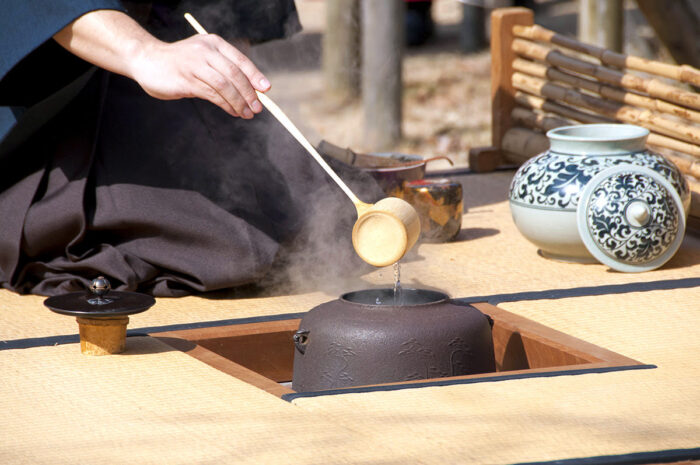
The Meaning Of Geisha And What Do They Do?
Geishas are commonly referred to as geiko or maiko in the Kyoto dialect (where gei means “art,” sha means “person,” and ko means “child”). The former has to be at least 20 years old, while the latter falls between 15 and 20. A geisha is a Japanese woman performer typically hired to amuse visitors at teahouses and other formal gatherings. A geisha will engage in lively discussions while serving food and beverages, hosting tea ceremonies, singing, dancing, and performing music at such meetings.
Hanami-koji-dori in Gion (the area between Kennin-ji and Shijo-dori Temple) and the Shijo-dori end of Pontocho are the two greatest sites to watch Geisha in Kyoto. Early evening around sunset, is the most fantastic time to watch them, particularly on weekends and holidays. On Monday evenings, you might not find any of the geishas.
The Misconception
The idea that geishas are the same as prostitutes should be promptly dispelled to clear the air before delving deeper. Women in “pleasure quarters” referred to themselves as geishas as the culture initially emerged during the Edo period. Still, those customs—including selling one’s virginity in exchange for a maiko’s mizuage ceremony—are no longer followed.
The Geisha is part of a traditional and largely unexplored world. The term “geisha” is more widely known in the West. However, locals consider it derogatory and emphasize that, compared to World War II, there is neither prostitution nor child labor involved today.
Geisha is a dedication to a traditional culture that has existed for hundreds of years here, particularly in Kyoto, a city with a population of 1.4 million today. The city’s culture is still its most vital asset.
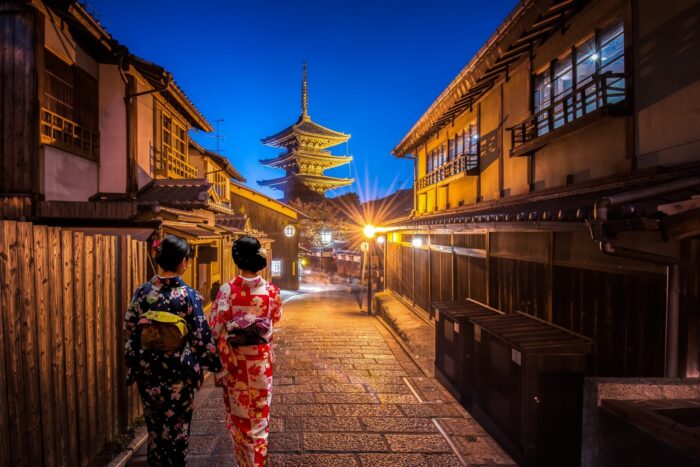
A Modern Geisha’s Life
Being a geisha is a demanding and drawn-out procedure that calls for commitment and tenacity. Young females, typically between 15 and 20, are selected with care to serve as apprentices in a Geisha home called an “okiya.” They are referred to as “maiko” at this time and are submerged in a world of training, customs, and discipline.
The maiko years are a sensitive time of change and education. They have unique hairstyles denoting their rank as apprentices, and they dress in lavish, colorful kimonos embellished with exquisite obis. These elaborate garments serve as representations of their artistic journey in addition to being stunning. Maiko has received instruction in various musical instruments, classical dance styles, and conversational skills.
As they advance in their training, Maiko eventually evolves into Geisha, or “geiko” in the Kyoto dialect. Geisha display their improved position and expertise in the arts through more subtle kimonos and hairstyles. Geisha in full bloom are masters of the performing arts, enthralling audiences with their wit, charm, and artistic prowess.
Kyoto’s Nightlife: Geisha Districts
One must see the historic neighborhoods, or “hanamachi,” wherein these enigmatic entertainers live and work to grasp the core of geisha culture. Among Kyoto’s most well-known hanamachi, Gion is especially noted for its historic allure and Geisha population.
Visitors can see Geisha delicately sliding between tea houses and restaurants in the congested streets of Gion. While interacting with Geisha necessitates contacts and a significant financial investment, seeing them roaming on the streets is an unforgettable experience in and of itself. A remarkable example of how tradition is being upheld in a world that is quickly modernizing is the sporadic appearance of a geisha, typically accompanied by a young apprentice.
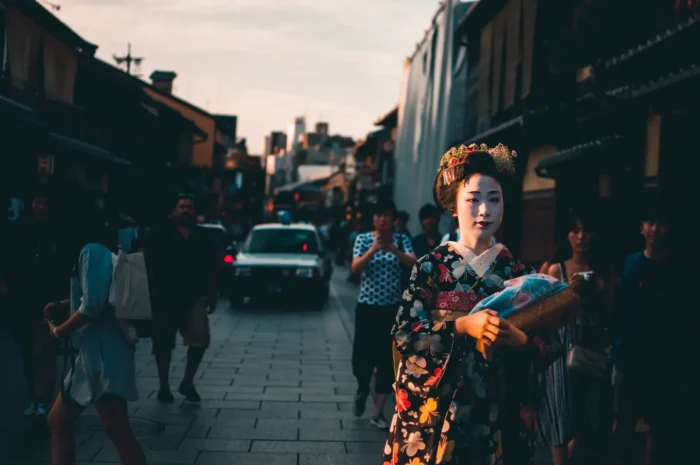
Geishas Left In Modern Japan
There are currently just 1,000 geisha left in Japan, and most are concentrated in the cities of Kyoto and Tokyo. These contemporary Geisha are rarely approached for pictures or conversation outside of their district since residents of Japan show them the utmost respect. As reported by city tourism officials who market the five areas known as Kagai where these ladies live and work, a few are in their 80s. Currently, there are 67 maikos and 177 Geishas in Kyoto.
The Value Of Maintaining Geisha Culture
Geisha are becoming less and less common, which poses a severe threat to this beloved cultural institution. Due to the vast differences between contemporary lifestyles and career objectives and those of the past, geisha households need to help recruit new apprentices. Additionally, the infatuation with pop culture and technological advances has taken people’s focus away from traditional arts.
The Geisha tradition must be preserved for its historical value and the aesthetic appeal it adds to Kyoto’s nightlife. Geisha is a beautiful example of the virtues of perseverance, commitment, and the unrelenting quest for perfection in their trade. Japan has the potential to cherish its cultural history and enchant people from across the world by fostering and promoting this valued practice.
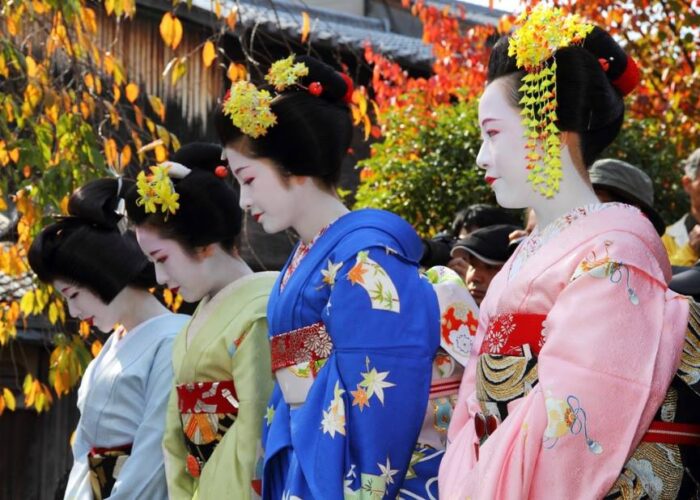
Conclusion
Geisha culture in Kyoto remains a mysterious and seductive component of Japanese heritage. Geisha continues to fascinate audiences with their grace and mesmerizing performances while steeped in history, elegance, and sophisticated arts. While they may be fewer in number, their cultural significance and role in Kyoto’s nightlife remain unchanged. In addition to serving as a tribute to Japan’s long history, preserving this exceptional institution invites tourists to enter the intriguing realm of the Geisha, wherein the secrets of the past converge with the appeal of the present.





